The soaring oratory of the Easter Rising Proclamation – “In this supreme hour the Irish nation must . . . prove itself worthy of the august destiny to which it is called” – was followed by seven long years of desperate deal-making, retribution, and bloodshed. Only then did the Irish find themselves on the path to freedom.
The fallout from the Rising did not end when all seven of the Proclamation’s signatories, and others, were executed by the British within weeks of Easter 1916. Hundreds more were arrested and martial law took hold across much of Ireland.
The mass arrests – following the outcry over the executions of Rising leaders – fanned a growing nationalist sentiment in Ireland.
“The clang of prison doors on the ever-increasing numbers of young rebels… failed to drown the defiantly swelling chorus of ‘Up the Republic,’” Tim Pat Coogan writes in The IRA: A History.
By June of 1917, there was a general amnesty – so as to create what British authorities called “a favorable atmosphere” for peace negotiations – and the vast majority of remaining detainees returned home. Unintentionally, however, the prisoner release also seemed to create a new boldness among Irish nationalists. The prisoners were greeted by frenzied crowds in Dublin, while across the country, armed men drilled in public, in a show of military preparedness for whatever the future might hold.
The Rise of Sinn Féin
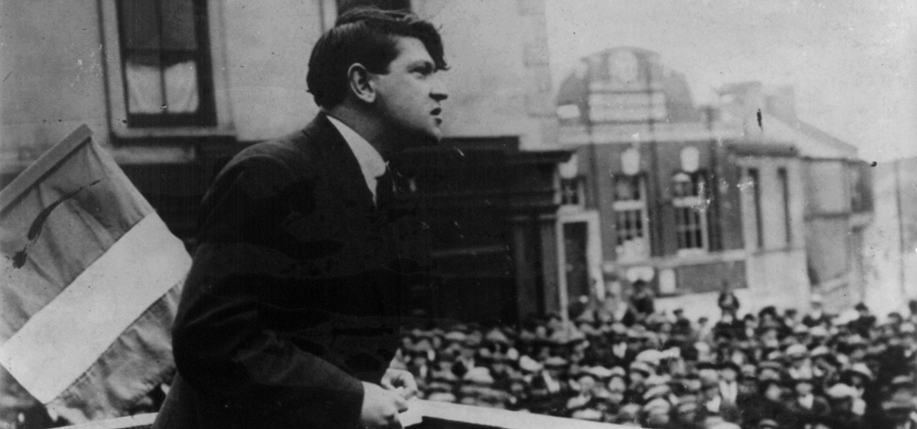
Capitalizing on the post-Rising nationalism, as well as opposition to the military draft in Ireland, Sinn Féin won parliamentary elections across much of southern Ireland in 1918. Around the same time, the Irish Volunteers – the armed group that had largely been responsible for the Rising and which was now drilling openly – were reorganized under the leadership of Michael Collins, Cathal Brugha and Sinn Féin leader Éamon de Valera, the most prominent Rising participant who was not executed (partly because he was American by birth). The Volunteers – forerunner to the Irish Republican Army (IRA) – would serve as Ireland’s main defense force, in case hostilities with Britain renewed, and also because Ireland was swiftly undertaking the process of building itself into a nation, with functioning courts, military forces, and other day-to-day operations.
Sinn Féin had formed in 1905 in an attempt to bring numerous nationalist factions together, based on “abstentionist” principles – that the Irish should not even participate in the political process of imperial Britain, with the long-term goal of a united Republic.
The party was seen as an alternative to moderates such as Redmond who, though he’d advocated Irish Home Rule for decades, also believed the Irish should fight alongside the British to beat back Germany in World War I.
Indeed, at the time of the Rising, Ireland was not only divided by the question of independence, but also by participation in World War I.
Though some saw this as an act bordering on treason, thousands of Irish men had signed up to fight alongside the British – to earn money, or simply see the world.
John Redmond’s Wexford-born brother Willie – also a member of parliament – was killed in action in 1917.
When John Redmond’s East Clare seat opened following his death in 1918, it was won by none other than Sinn Féin’s Éamon de Valera.
It was clear that a new political wind was blowing across Ireland.
The First Dáil
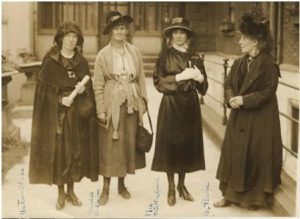
In January 1919, Irish lawmakers such as de Valera enraged the British by refusing to take their parliamentary seats in London. Instead, they set up a breakaway parliament, the Dáil Eireann, in Mansion House on Dawson Street in Dublin. Many of the Dáil’s newly-elected members, including de Valera and Arthur Griffith, were subsequently imprisoned by the British on various charges related to sedition and collaboration with the Germans.
Events took a dramatic turn in February when Michael Collins and Harry Boland went on a secret mission to Manchester, England to coordinate de Valera’s escape from prison. De Valera had managed to make an impression of the prison cell key in candle wax. A copy was made and smuggled into the prison inside of a cake.
Armed resistance to British occupation also grew in 1919. In what many consider the first shots fired in the Irish War of Independence, members of the Irish Volunteers ambushed and killed two Royal Irish Constabulary (RIC) police officers who were transporting the explosive gelignite in Tipperary. There was sporadic violence that year – including the attempted assassination of a British viceroy in December – but nothing compared to the following year, 1920, which came to be known as the “Year of Terror.”
Hunger Strikes
In January, Tomás MacCurtain, an IRA leader, was elected Lord Mayor of Cork. Weeks later he was assassinated, likely by RIC soldiers. MacCurtain was succeeded by Terence MacSwiney, who was swiftly arrested on what critics said were flimsy charges of sedition. Sent to England’s Brixton prison, MacSwiney went on a hunger
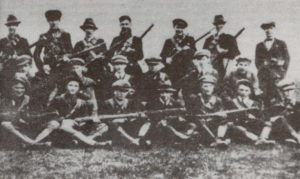
strike that lasted an astounding 74 days. When MacSwiney finally died he became an international symbol for the troubles besieging Ireland.
To stem the rising tide of violence in Ireland, the British established the notorious “Black and Tans” (thus called for their uniform colors), a security force that was “more or less given a free hand, to shoot, loot and carouse as they wished,” as Tim Pat Coogan put it in his book Ireland in the 20th Century.
And so the IRA fought back.
“During the course of the war… the IRA, as the Volunteers became known after the first Dáil, carried out a campaign of ambushing, raiding police barracks, and inflicting casualties which were estimated… at 600 killed and 1200 wounded on the British side, and 752 IRA men killed and 866 wounded,” writes Coogan.
A cycle of attacks and reprisals gripped Ireland for much of the year. The Anglo-Irish war was brutal, with torture a common tactic used by the British to gain information or revenge. (The excellent 2006 film The Wind That Shakes the Barley covers this period and gruesomely depicts a common British tactic – soldiers peeling back the fingernails of captured IRA soldiers.)
Bloody Sunday
The most notorious day of the conflict was “Bloody Sunday” in November of 1920. Michael Collins had assembled an elite assassination squad within the ranks of the IRA that had come to be known as the “Twelve Apostles” – including future Irish prime minister Sean Lemass. On the morning of November 21, the “Apostles” fanned out across Dublin and assassinated 14 British intelligence and security personnel. Later that day, in what was widely seen as retaliation, British auxiliary forces (the Black and Tans) stormed the highly-anticipated Gaelic football match between Tipperary and Dublin. Claiming (with no subsequent proof) they had been shot at first, soldiers opened fire, killing over a dozen spectators and wounding many more. Tipperary captain Michael Hogan was also killed, and to this day, in tribute, a section of Croke Park is known as Hogan Stand.
Trouble in America
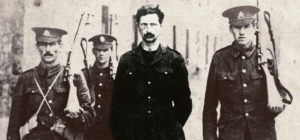
Irish America, meanwhile, had faced its own troubles even before the Easter Rising. It was a time of backlash against immigrants and ethnic minorities in the U.S., and once World War I began, the Irish conflict with England, an American ally, started to look like support for Germany. It did not help that some Irish Americans were, in fact, recruited for various German-led sabotage missions in the U.S., designed to keep America out of the war.
The most prominent Irish American nationalist of the early 20th century was Kildare native John Devoy, who had been active in Ireland’s Fenian movement. After serving part of a 15-year prison sentence for treason, Devoy came to the U.S. in 1871, settling in New York City.
“John Devoy’s position as leader of a great and seemingly united exile movement was unchallenged,” writes Terry Golway in his Devoy biography Irish Rebel.
For years, Devoy built coalitions between more secretive nationalist groups such as Clan na Gael and more public ones like the Friends of Irish Freedom, which, at the height of its popularity, boasted a membership of over a quarter of a million.
Devoy and his Irish American network played a central role in the planning and execution of the Easter Rising. But afterward, Devoy’s carefully-constructed coalitions began to crumble.
These divisions became most glaring when Éamon de Valera made a perplexing decision in 1919.
Following his escape from prison, de Valera – born in Manhattan to an Irish immigrant mother and Spanish father – believed that if Ireland was truly going to be recognized as a republic, American influence (and money) would be vital to the cause. However, Michael Collins and others believed there was no point in organizing Irish American opinion when the situation in Ireland remained so unsettled.
In the end, de Valera went to America, and it was not long before simmering fissures in the trans-Atlantic nationalist movement burst wide open.
Wilson and the Irish
The de Valera and Devoy camps disagreed over the degree to which U.S. president Woodrow Wilson – a known Anglophile – could be trusted to support the cause of Irish freedom. Yes, once World War I had ended, Wilson did champion the rights of small nations to govern themselves, but Devoy had warred fiercely with the president, whose administration banned Devoy’s newspaper, the Gaelic American, and openly questioned the loyalty of numerous Irish American leaders.
Instead of building a powerful coalition, Irish leaders sought to undermine each other, establishing competing organizations such as de Valera’s American Association for the Recognition of the Irish Republic (AARIR).
“The Irish American movement,” according to Golway, “had been split at the very moment of Ireland’s greatest peril and greatest opportunity.”
Peace Treaty Leads to Civil War
By 1921, as many as 1,000 lives had already been claimed by the Anglo-Irish War of Independence. A truce was finally called in the summer, and an Irish delegation went to London to negotiate a treaty.
De Valera, again, made a mystifying decision.
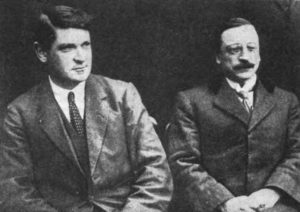
Though he met with British prime minister Lloyd George numerous times in July, he decided not to take part in the final negotiations directly.
Instead, Michael Collins and Arthur Griffith met with the British throughout the fall of 1921 and ultimately decided that the best deal they could get was conditional freedom for the 26 counties in the south. The island of Ireland would be partitioned, with the six counties in the north remaining part of the British Empire. And the Irish would still have to swear an oath of allegiance to the British crown.
Done fighting the British, the Irish were about to start fighting each other.
The Dáil fiercely debated the treaty, with de Valera and other hard-liners leading the opposition. Collins, however, spoke of the treaty as the best, first step towards the long-term goal of an Irish republic. Sinn Féin was hopelessly split into pro-and anti-treaty factions.
In January of 1922, the Dail voted to accept the treaty 64 votes to 57. The Irish people backed these results in the subsequent parliamentary elections and the so-called “Irish Free State” was established – which did little to appease the anti-treaty forces on both sides of the Atlantic.
In the U.S., Clan na Gael and the Friends of Irish Freedom split over the merits of the Anglo-Irish treaty. In Ireland, acrimony between partisans and enemies of the treaty turned violent.
De Valera resigned as leader of the Dáil and barnstormed across Ireland, denouncing the treaty and proclaiming that Irish nationalists “would have to wade through the blood of the soldiers of the Irish government… to get their freedom.”
Sure enough, in April 1922 – six years after the Easter Rising – the Four Courts and several other buildings in Dublin were occupied by armed men, this time opposed to their fellow Irishmen. For two months there was a stalemate, with Collins – the leader of the Free State military – hoping violence could be averted. However, once the anti-treaty rebels kidnapped a Free State general, Collins – already under enormous pressure from the British – approved the shelling of the Four Courts. Days of gunfighting in the streets of Dublin ensued, with hundreds dead (including Cathal Brugha on the anti-treaty side) and hundreds more wounded. Through the summer, anti-treaty forces managed to control large swaths of southwestern Ireland (which they dubbed the “Munster Republic”), though many others were rounded up to face imprisonment and even execution. By late August, Free State forces had largely regained control of rebel-held areas such as Cork, though it was still a dangerous place for treaty supporters like Michael Collins, who was planning a visit to the area, possibly to discuss a ceasefire.
On August 22, 1922, Collins was killed in an ambush at a crossroads called Beal na Blath. Many speculate (as seen in the film Michael Collins), that de Valera was behind the assassination plot.
Just 10 days earlier, Arthur Griffith had died of heart failure. On the anti-treaty side, Brugha and Harry Boland had also been killed. The civil war seemed to be decimating an entire generation of Irish leadership.
If the Rising gave us William Butler Yeats’s sublime poem “Easter 1916,” the work of literature best associated with post-1916 Ireland may well be Liam O’Flaherty’s bleak short story “The Sniper,” in which two gunmen on opposite sides of the Irish Civil War stalk each other. The story’s last line reads: “The sniper turned over the dead body and looked into his brother’s face.”
The Civil War truly did divide friends and family. Cork-born brothers Sean and Tom Hales fought side by side against the British, and the latter was even captured by Crown forces and tortured. Following the treaty, however, Sean supported Michael Collins while Tom fought against the forces of the Irish Free State, going so far as to participate in the ambush on Collins. Sean Hales was later killed by anti-treaty forces. In retaliation, Free State Minister for Justice Kevin O’Higgins ordered several anti-treaty prisoners executed, including Rory O’Connor – who had earlier served as best man at O’Higgins’ wedding.
Aftermath
Though Free State forces had superior weapons and organization, the civil war dragged on until May of 1923. Guerilla warfare flared up intermittently in rural areas, where house-burning was also a common tactic on the anti-treaty side. All in all, there were thousands of casualties. Railways, roads, and urban administrative buildings lay in ruins, costing Ireland millions in damages. The toll on families and friendships that had been torn apart could not be measured.
Just weeks after anti-treaty leader Liam Lynch was killed in April 1923, a ceasefire was finally declared, with the anti-treaty faction of the IRA dumping its arms (rather than surrendering them) at the end of May.
“Further sacrifice of life would now be in vain…. Military victory must be allowed to rest for the moment with those who have destroyed the Republic,” a bitter de Valera said in a statement.
But the healing process would be slow indeed. Thousands of anti-treaty sympathizers faced harsh treatment while still in prison, even launching a lengthy hunger strike in October of 1923.
“The civil war was over,” Tim Pat Coogan writes in Ireland in the 20th Century. “But . . . the new state had been born in bloodshed and hatred, which would affect political, economic, cultural and social progress for many years into the future.” He adds, “The days of the high heroic were over, and the dull, grey business of balancing the books, of making the new Irish Free State work, resembles nothing so much as the cleaning up of a house after what was intended to be a massive and joyous party ended in violence and destruction.”
Thousands of emigrants, meanwhile, headed to the U.S., fleeing either British authorities or else the hostilities that lingered among the Irish who ended up on opposite sides of the civil war. In New York, expatriate IRA veterans like Thomas O’Shea redirected their political energies into labor organizing, forming the Transport Workers Union and other influential groups.
A Republic, Finally
The towering figure of post-civil war Ireland, of course, would be the enigmatic de Valera, who, once the guns had been set aside, decided it was best to work within the system. He left Sinn Féin, founded the Fianna Fail party, and would be at the center of Irish political power for the next five decades, until his death at the age of 92 in 1975. De Valera rewrote the Irish constitution in 1937, which finally brought stability, though critical historians have long charged that this set Ireland on a decidedly conservative path. They point to the constitution’s infamous “within the home” clause referring to women, as well as the prominent social and educational role given to the Catholic Church.
De Valera helped pass legislation that finally made Ireland a republic. The law officially went into effect on April 18, 1949 – days before the 33rd anniversary of the Easter Rising.
The question of partition never went away, and if violence had largely been set aside in the Republic of Ireland, it migrated North, flaring up into the infamous Troubles of the late 1960s. Thousands more would die until the late 1990s when it seemed there was a real moment for lasting peace. Again, there was controversy – particularly over the decision to grant Sinn Féin leader Gerry Adams a visa to visit the U.S. But overall, Irish America was much more unified and played a key role in what would blossom into the Good Friday Agreement, signed on April 10, 1998. Next year marks the 20th anniversary of that fragile – but, thus far, lasting – peace.
And while 1916 will forever remain a mythic number in Irish history, it was only in the years after the Rising that Ireland did the hard, bloody work of finally becoming a republic. ♦

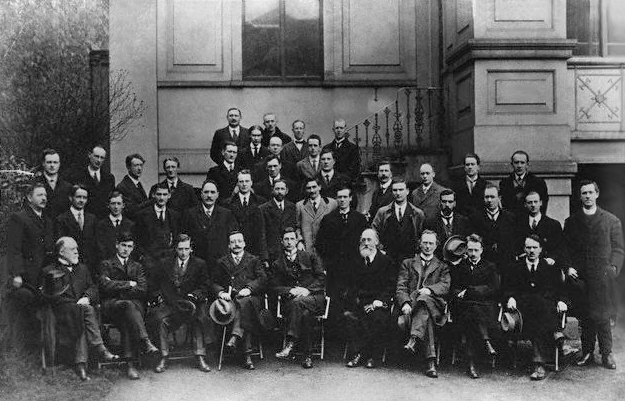
Leave a Reply